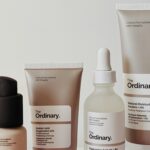Nearly half of American adults are happy users of electric toothbrushes. While this group of avid teeth cleaners actually declined four percentage points over the last two years, intent to try electric toothbrushes rose by three percentage points. The overall vibe of these high-powered dental tools is positive.
Who are the ones choosing electric over manual toothbrushes? What are the toothbrush trends shaping the 2023 market?
Dental Health & Habits
Satisfied electric toothbrush holders are very likely to say they aren’t concerned about their dental health, perhaps as a result of feeling like they get a deeper clean than with a manual toothbrush. People who tried but didn’t like electric toothbrushes, or haven’t used them but plan to, are more likely to report concern over their dental health. There is likely a huge market of possible electric toothbrush buyers who are simultaneously very concerned about their dental health and searching for solutions.
Among electric toothbrush owners, 70% use theirs on a daily basis – 37% brush at least twice a day, while another 33% do so once per day. Thirteen percent of electric toothbrush owners have one of these gadgets but don’t actually put it to use.
Regular electric toothbrush users are also more likely to have other regular dental care habits, such as flossing. Nearly half (48%) say they floss their teeth on a daily basis, which is higher than the Gen Pop average (38%). Most U.S. adults say they floss either once a day or a few times per week, but taking extra good care of your teeth means getting every nook and cranny.
Water flossers, similar to the irrigators used at the dentist’s office, are trending dental hygiene devices that are also hugely popular among the American public. One-quarter of U.S. adults have used and liked them, and 19%, who were familiar with the dental hygiene tool, said they planned on trying one.
Data show people favorable to using an electric toothbrush are significantly more favorable to using a water flosser – more than a third have tried and liked the devices. At the same time, those who intend to purchase an electric toothbrush are also very interested in trying out a water flosser.
Brand Names Today
Oral-B dominates the electric toothbrush market with a phenomenal 51% of electric toothbrush owners using its brand. Philips does well for itself, claiming 23% of electric toothbrush users, but other brands can’t really compete. Even Quip, a cute and affordable electric toothbrush subscription service, doesn’t hold a candle to the major players.
Age & Income Trends
However, age data provide a future-focused perspective on which brands could rise to the top in years to come. Oral-B is actually the most prevalent electric toothbrush brand among consumers aged 35 and older, particularly among those 55 and older. Younger consumers, those under 35, deviate from the norm and show greater interest in the brushing technology offered by Colgate, Arm & Hammer, and others.
When a consumer’s brand preference is sorted by their annual income, the data show a correlation between making more money and using either Philips or Oral-B brands. People under 35 might be more open to alternative brands simply because of the price tag: pay less than $30 for Colgate’s Hum smart brush or several hundred for the latest Oral-B.
In general, age and income factor into overall experience with electric toothbrushes. While older teeth brushers are more likely to own and use an electric toothbrush, younger consumers express a new-found interest in going electric.
Electric toothbrushes might have a wide appeal to all people who brush their teeth, but there is a connection between usage and a higher annual income. At first glance, income correlations seem to mirror age correlations, revealing a potential proxy, but it all comes down to intent: younger people plan to try electric toothbrushes more than older age groups, but lower income households are the most likely to be uninterested in the electric toothbrush idea.
One point of interest is that people making $50K or less per year are actually the most concerned about their dental health – this could present opportunities for very targeted brand awareness marketing.
While income influences electric toothbrush ownership, there is certainly enough motivation for consumers to go hard on dental hygiene. Money isn’t stopping everyone from upgrading their toothbrushes. Furthermore, as young adults become more interested in electric brushes and explore alternative brands, companies looking to get ahead or stay ahead need to focus on marketing and consumer research.








